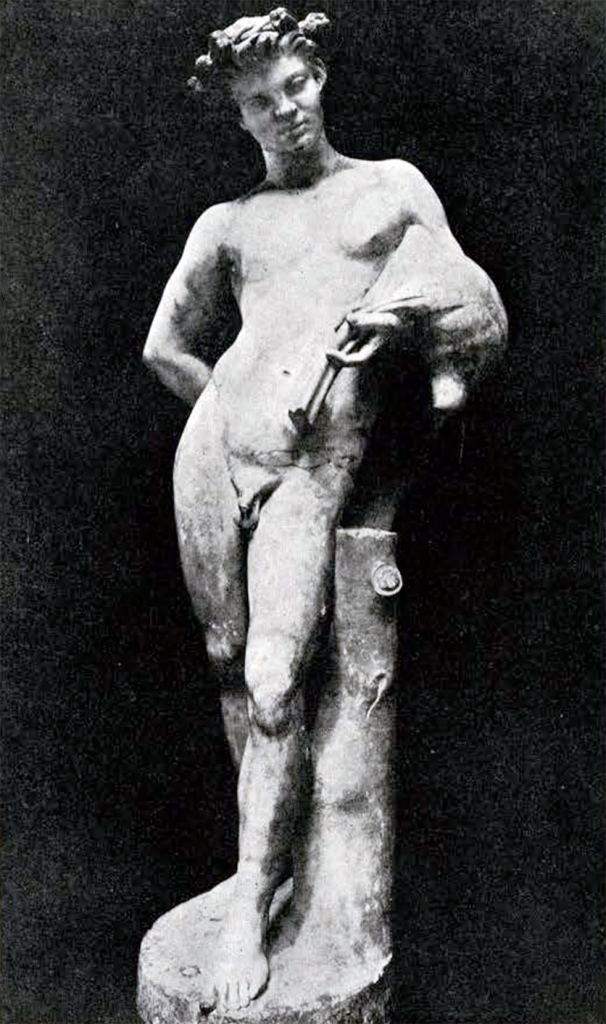Among the marbles which have been presented to the Museum by Mrs. Lucy Wharton Drexel are a number from Lake Nemi. They vary much in artistic merit and all date from imperial Roman times, but some of them reproduce motives from the great period of Greek sculpture. One of the most interesting is a broken figure of Eros bending his bow (Fig. 17). The left leg is gone below the knee, the toes of the right foot, the right arm from the shoulders and the left from below the waist arc all missing, as is also the bow which may have been of some other material than marble. The face, too, was unfortunately destroyed and has been replaced in plaster.
Although this piece of sculpture dates from imperial Roman times the motive is Praxitelean, and it is not unlikely that the artist who carved it was inspired by the work of the great master of the fourth century B. C. The Eros of Praxiteles was one of his most famous works as we know from the anecdote told by Pansanias. Praxiteles had promised to give Phryne the most beautiful of his sculptures, but refused to tell her which he regarded as the most beautiful. One day when he was seated in her house quietly talking, a slave rushed in, shouting that his workshop was on fire and some of his statues destroyed. The sculptor leaped from his seat saying that if his Eros and his Satyr were lost he had worked in vain. Then Pharynx told him not to be alarmed, that nothing had happened, but that she had found out which was his most beautiful statue. She then chose the Eros and dedicated it in her native town of Thespiae. Like most good stories this is probably apocryphal and our statue, though perhaps indirectly influenced by the famous Eros, is not, so far as we know, a copy of it.
Another marble from Lake Nemi worthy of note is a youthful faun with left leg advanced, leaning against a stump. He is nude and has resting over his left arm and behind his back a partially empty wine skin. About his head is a garland of pine needles and cones. The animal character of the faun is seen in the pointed ears and the slanting eyes, but the contrast with the realism of the Pergamene school as shown in the sleeping and drunken fauns from Herculaneum is striking. This statue may go back to a fourth century original.
W. N. Bates



